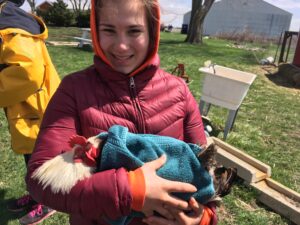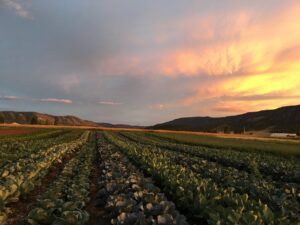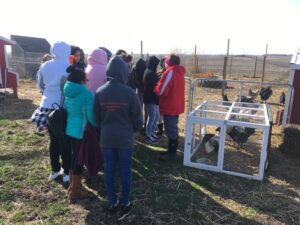Final report for FNC17-1101
Project Information
I farm three acres of small vegetables and a 1000 ft2 rooftop herb garden for Hendrick House. I started this farm five years ago. We are not organically certified but practice organic methods. We plant native pollinator flowers and plants at our farm. We have living path spaces which are mowed.
I intend to provide farm to table education to foodservice providers, youth, farmers and the local community to encourage moving away from prepackaged, pre-processed, unhealthy food that institutionalized kitchens often provide while also creating awareness of the importance of supporting local farms in the community.
There are four population sectors I am targeting to implement the proposed educational project. The first sector is youth in the community. I plan to hold three one-hour workshops to demonstrate farming in the stages of planting, harvesting and consuming. My goal is to show youths where their food is grown and the difference in quality between food off the farm and processed food. I will work with University of Illinois Extension leading youth workshops and educating children on the importance of farm fresh food.
The second sector will be food service workers. I intend to assemble a workbook to be used as a field guide to educate them in health benefits and proper storage and also provide them with recipes to build on when transitioning to farm fresh cooking during four workshops that are three hours long, twice a year. During these workshops we will be writing menus for upcoming semesters with the hope that chefs will order more local food and we will discuss reducing food waste using more in-house processing methods.
The third sector I will be targeting is farmers. I intend to work with The Land Connection in educational workshops for local farmers from a “chef’s point of view.” I will also be reaching farmers through presentations at state wide conferences with the intent to increase business for local farms by sharing my knowledge on how to interact with chefs, packaging and receiving and what chefs look for regarding quality and reliability.
The fourth sector I plan to target is the general public. I will be publishing articles in the New Illinois Farmers listserv, Illinois Fruit and Vegetable newsletter and The Land Connection Newsletter. I will also educate the community through social media, websites and weekly blog posts to increase the use and purchase of locally-produced food.
Research
***Please refer to Education and Outreach section since the grant received focuses on education.***
***Please refer to the Education and Outreach section and Lessons Learned sections***
I have provided data from 2016 - 2018 tracking chef responses within the company, local food orders with Hendrick House and how it has impacted other farms in the area, an increase in youth workshops and partnerships with the community and finally the numbers of people reached through publications, blog posts and facebook live for the last two years.
Educational & Outreach Activities
Participation summary:
I produced a workbook given to 25 head cooks that assisted in the education of foodservice workers within the company. The workbook has pictures of produce coming directly from Hendrick House farm so the cooks are able to identify size and color of produce they will be receiving. It also provides proper storage information, facts about the variety of vegetable and recipe ideas on how to prepare them. This workbook has been shared with SARE and The Land Connection to be used as an educational guide.
I hosted two series of four workshops in 2017 that each head cook was required to attend, making a total of 25 attendees twice a year. The first set of workshops focused on the workbook information, menu development and recipe ideas on how to cook with seasonal produce. The second set of workshops focused on advanced education regarding seasonal cooking, pros and cons of 2017 growing season and standing orders and ideas for 2018. I want foodservice workers to actively participate in what is grown on the farm so they will be vested in the local food movement. We are expanding on this in 2019 by providing chefs with their Hendrick House Farm order amounts so they can compare to other kitchens their size and also see where they can improve in 2020. I was able to work with Purdue Extension and was sent their Foodlink packet to share with the chefs in the company to assist them with preparing local food. I punched holes in them and put them on a carabiner for ease of use.
I compared foodservice worker's Hendrick House Farm orders from 2016 to 2017 to gauge the retention level of information given during these workshops. Overall the numbers presented below have a lot of variance due to underproduction at certain points in the farm season due to a heavy drought year. The foodservice workers were excited to be participating in standing orders which reduced the amount of times they would have to communicate orders with me via email. These standing orders were set up at the beginning of the semester with face to face meetings. This seemed the most favorable ordering system by the cooks. Below is a picture of the set up for standing orders for fall 2017 and also the outline for the second series of chef workshops I held.
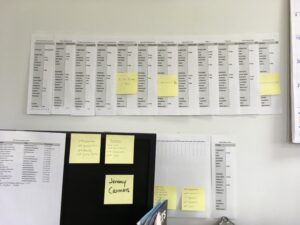
There was a drop in the amount of Hendrick House Farm orders from 2017 - 2018. This is due to our land lease coming to an end at the beginning of November with University of Illinois and transitioning to a new property with ten acres and a long term lease. This will show a positive reflection over time due to the increase in land and being able to farm year round. Below are the
2019 Chef Workshop Topics
Farm 2019
- Advantages of Having a Company Farm
- Update on location/ building infrastructure
- Washing own harvest containers
- 20 mins each way to town … impacting last minute deliveries
- Partnerships with CUSF, U of I Extension, Parkland
- Wider range of produce: requests??
- CSA: would chefs like to participate
What worked and What didn’t??
- Deliveries: Tuesday/ Friday
- Packaging: old way vs. new way
- Orders: email system?
- Distribute QR Code books
HOW TO COOK SEASONALLY
- How do you cook seasonally??? What is your favorite vegetable???
- Pros of using fresh produce
- Fresh
- You decide what is grown
- Personal relationship with farmer
- Cons of using local produce
- Inconsistency in size: ie. Squash etc
- Weather patterns: rainy year compared to drought year
- Produce is free: what are the barriers???
- Multiple items on produce list: don’t take all but you need to take some
Chef Ideas for 2019 Farm Season
- What do you want to see grown?
- What do you want to change/ stay the same?
- How could the farm system be better for your needs?
- Recipe Sharing:
The first two excel sheets below are the tracking of Hendrick House Farm purchases from 2016 to 2017 with the cooks at all of the production kitchen locations (all of my clients that work in seasonal kitchens). The last two excel sheets include the numbers for 2018.
Order-Summary-Analysis-HH-Farm-2017
Farm-Order-Comparison-between-2016-and-2017
Chef-Workshops-January-2018 Order-Summary-Analysis-HH-Farm-2018
Farm-order-Comparison-between-2016-2018
The excel sheet below is the tracking of Hendrick House dorm's (open year round) local farm purchases (minus Hendrick House Farm because those stats are shown above).
HH-Local-Food-Purchases-2016-vs-2017
You can see by the above chart that our year round kitchen increased local food sales to other farms in the area by 60% from 2016. Other farms are able to fill demands by selling to large scale food service producers. As the education of the importance of local food and supporting local farms increases, I expect that number to continue to increase from year to year.
The excel sheet below is the tracking of Hendrick House dorm's local farm purchases with 2018 numbers added in.
HH-Local-Food-Purchases-2016-2018
My prediction was correct and Hendrick House added four new local farms to their list in 2018, increasing local food sales by $11,275.39.
I hosted a group of 20 high school teachers from Central Illinois. I spoke on the importance of fresh produce in schools, educating them on our farm practices and how Hendrick House is using the fresh produce from the farm.
HH-Farms-2017-Power-Point-copy
I hosted a series of three workshops over the 2017 summer with a group called DREAAM HOUSE. DREAAM House is a school to college pipeline program to reach, teach and invest in boys and young men placed at risk with a targeted focus on African American males. There were 20 boys in each workshop and the workshops were held on June 27, July 11 and August 11 of 2017. Each of these workshops consisted of two parts; the farm and the kitchen. After the students spent the first half of the day at the farm they then moved to the kitchen to learn how to prepare what they identified and harvested. They also learned food safety and sanitation (e.g. proper hand washing). They each received a laminated recipe card to take home so they could recreate the recipe.
The first workshop was an introduction to the farm/ identification of farm produce.
The above picture is a vegetable identification sheet that concentrated on vegetables that grow above and below ground, which we covered in the first workshop. The farm was color coded into sections and each group of students had to identify the vegetable and circle which section they found it in. Each student planted a green bean seed at the farm and staked their name next to it. We were hoping that they would be able to see the progress of their plant during the next two workshops. Unfortunately due to drought and small animal problem, a lot of the seeds didn't make it.
The second workshop was rained out so we moved it into Hendrick House and did an herb identification/ taste workshop using herbs from the rooftop garden. We intended to do a "Farm Detective" workshop where the students would walk around the farm identifying each item on the sheet and circling if it is beneficial or harmful to the produce.
At the last workshop we had the children participate in a scavenger hunt building on what they had learned in the previous workshops with crop identification. Each group of students would have to identify the vegetable from the picture and pull their flag that corresponded to their assigned shape at the top of the page. When all the flags were pulled with their shape and all of the vegetable pictures were identified then the students would receive a vegetable shaped squishy prize.
I am saving the workshop surveys that were taken after each workshop from 2017 and will compare the results with the post workshop surveys from DREAAM House in 2018.
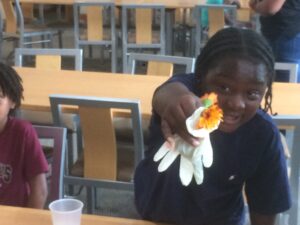
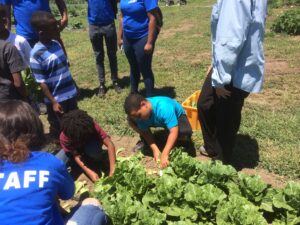
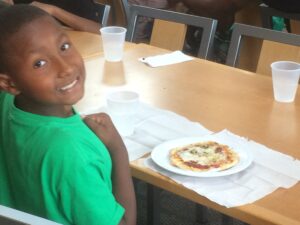

In 2018 I partnered with a non-profit, CUSF (Champaign, Urbana School Foundation). As part of our transition to new farm land, we acquired a one acre garden that is purely for educational purposes across the drive from our ten acre farm. We hosted five workshops on this piece of land in 2018 and two open houses.
The first open house/ work day was in April with Edison Middle School and Urbana High School. There were 65 students in attendance. They were broken up into groups learning composting, chicken anatomy, gardening 101, and edible landscapes. Julie Anders and Amanda Perez were the teacher organizers from Edison Middle School and Urbana High School respectively.
The first three youth workshops were with Edison Middle School STEM Camp totaling 25 youths for each workshop. The first workshop was an introduction to the farm, including safety procedures.
The second workshop was about chicken anatomy and the function chickens have on a sustainable farm. Hendrick House built a teaching kitchen in 2018 and we were able to do a farm to table workshop utilizing that space for the second part of the day for workshops 2 & 3 after we spent the first 1/2 of the day on the farm. Following with the theme of chickens, the second workshop went to the teaching kitchens and made breakfast tacos with the eggs from the farm. They also learned to make salsa with produce that was harvested by the students in the morning.
The third youth workshop was about pizza. There is a pizza plot at the educational garden divided into pizza slices. The slices contain wheat, garlic, onions, peppers and tomatoes. The kids were able to see each item growing and then complete activity worksheets calculating the "real time" it takes to make a pizza. They then went to the teaching kitchen and participated in a pizza sauce making demonstration. They also were able to make their own personal pizzas using toppings grown at the farm. Below are the curriculum guides for each one and pictures from all three.
Youth Workshop #1
Who: STEM Camp, Edison Middle School
Date: Wednesday, June 6, 2018
Location: 3100 North Rising Road, Champaign
Time: 9:15am – 12:45pm
Staff: Nathaniel, Julie, Ann, Tony – student intern
Materials:
- Disposable pots x 20
- Green bean seeds
- Gatorade coolers, ice water x 2
Workshop Format
- Farm Safety – for humans, chickens and plants
- Hazards on the farm
- Be aware of your surroundings/ Equipment usage
- Proper way to handle farm equipment
- Sign in/ sign out farm tool sheet
- Clean and properly store
Drip Irrigation
- Location
- Purpose
- Care and maintenance
Intro to Horticulture
- Plants vs. Humans
- Growth stages of green beans
Youth Workshop #2
Who: STEM Camp, Edison Middle School
Date: Wednesday, June 13, 2018
Location: 3100 North Rising Road, Champaign/
Time: 9:15am – 11:00am
Location: Killarney Teaching Kitchen
Time: 11:15am – 12:45PM
Staff: Nathaniel, Julie, Ann, Tony – student intern
Materials:
- Eggs – 2 doz
- Flour Tortillas
- Shredded Jack – 5lbs
- Tomatoes – 10
- Red Bell – 4
- Red onion – 1
- Cilantro – 2bnchs
- Small gloves – 2 boxes
- Hair nets – 1 box
- Aprons - 24
- Ranch dressing
- Cutting Boards, kid knives, 4 mixing bowls, 2 spoons, 2 whisks, strainer, 5 sheet trays
- Paper plates
- Plastic solo cups
- 2 x Gatorade coolers, ice water
Workshop Format
- Chickens
- Anatomy
- Care
- Food/ Digestive system
- Reproductive System
- Eggs
- Anatomy
- Kitchen/ Food Safety
- Proper hand washing
- Proper hygiene (hair nets, gloves)
- Tour of kitchen
- Preparing Farm to Table Lunch
- Cracking and whisking fresh farm eggs
- Laying out tortillas
- Cutting tomatoes, onions, pepper and cilantro for pico
- Panning shredded cheese
- Cutting farm broccoli florets
- Portioning dipping sauce
Youth Workshop #3
Who: STEM Camp, Edison Middle School
Date: Wednesday, June 20, 2018
Location: 3100 North Rising Road, Champaign/
Time: 9:15am – 11:00am
Location: Killarney Teaching Kitchen
Time: 11:15am – 12:45PM
Staff: Nathaniel, Julie, Ann, Tony – student intern
Materials:
- Paper plates
- Plastic solo cups
- 2 x Gatorade coolers, ice water
- Sauce pan
- Spatula x 5
- Kid friendly knives
- Cutting boards
- Sheet trays x 5
- Pizza sauce
- Shredded mozzarella 5lbs
- Oregano – from roof
- Yellow onion x 1
- Garlic from farm x 1
- Roma tomatoes x 10
- Small gloves – from previous workshop
- Hair nets – from previous workshop
- Aprons x 24
Workshop Format
***** Ingredients in a Pizza – Where do they come from?/ Real Time Worksheets*****
GROUP 1:
- Pizza Garden
- Ingredients List
- FRACTIONS – students show fractions from pizza garden (1/2, ¼, ¾, 1/8)
- When to plant what?
- Garlic
- Wheat
- Tomatoes
- Peppers
- Why can we get pizza toppings year round?
- What do plants need to grow healthy?
- What grows best where?
- What grows best when?
- Planting Peppers and Tomatoes/ Harvesting Garlic
GROUP 2:
- Farm Detective
- Identify insects in the garden
- Helpful or hurtful to plants
- Under/ Over Identification
Kitchen:
- Preparing Farm to Table Lunch
- Pizza starts on the Farm Worksheet/ English Pizza Worksheet
- Business of pizza
- most expensive ingredient
- why portioning ingredients is important
- Demo Pizza Sauce MOP
- Take pizza orders
- Students make pizza
- Pizza starts on the Farm Worksheet/ English Pizza Worksheet while pizza is cooking
- Lunch with Snacks
Ingredients-Where_Do_They_Come_From Pizza-Workshop Pizza_Starts_on_the_Farm
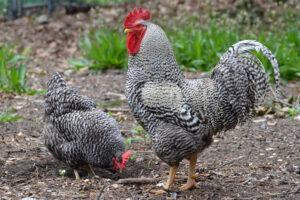
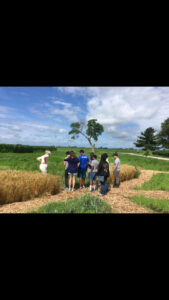
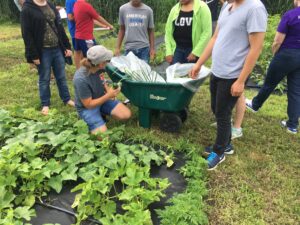
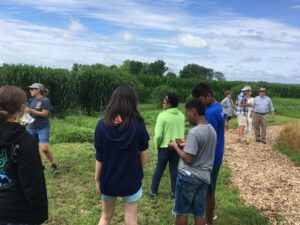
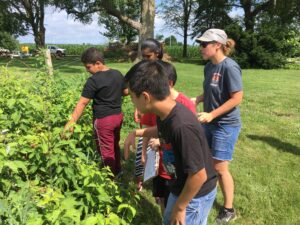
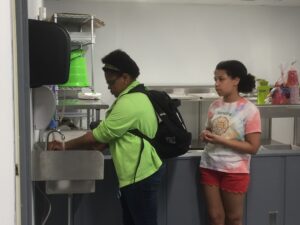

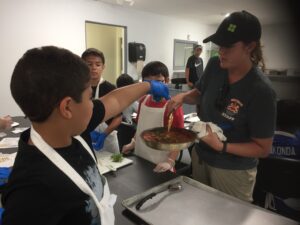

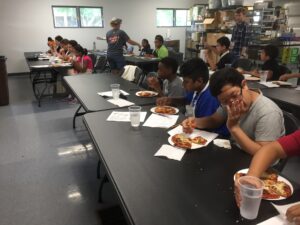

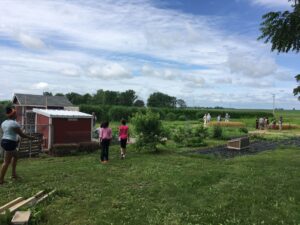
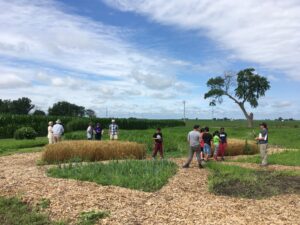
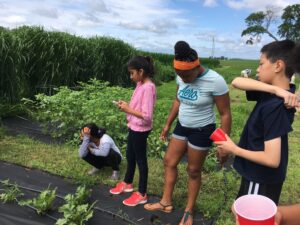
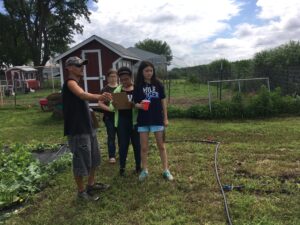
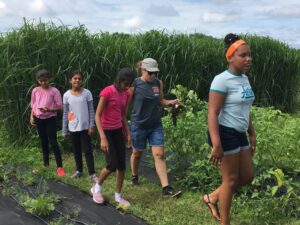
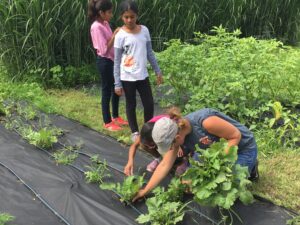
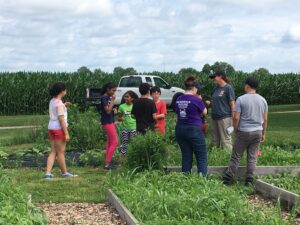
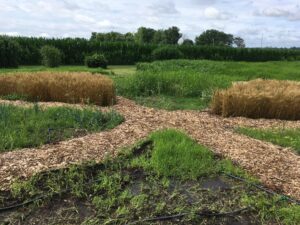
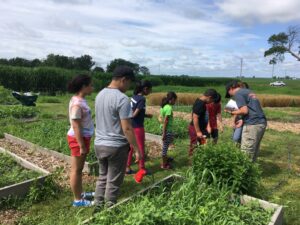
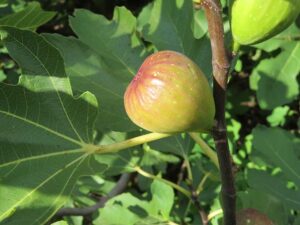



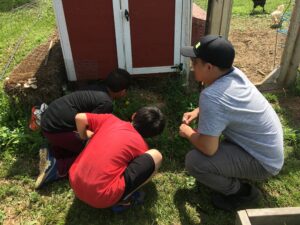

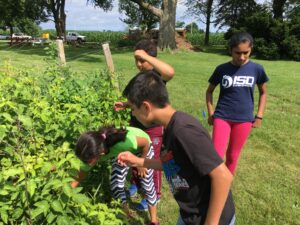
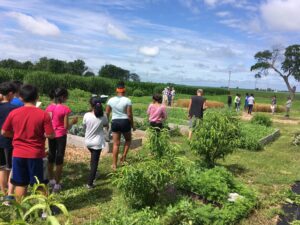

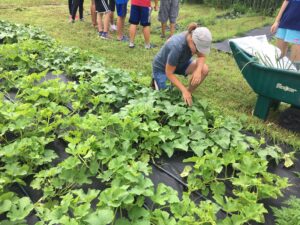
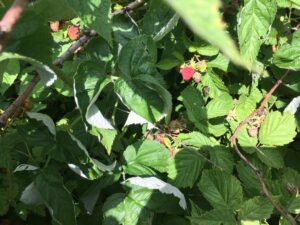
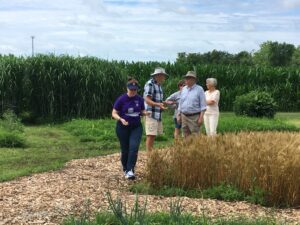

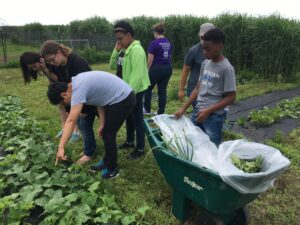
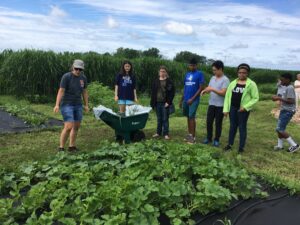

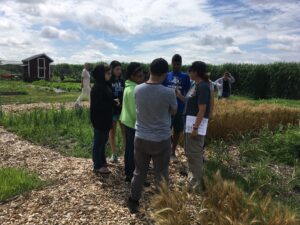
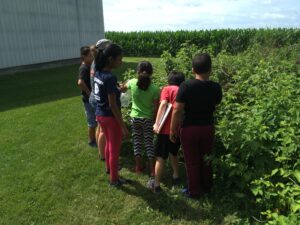















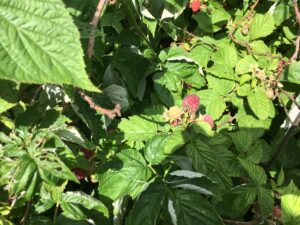
Youth workshops 4 & 5 were with DREAAM House. We worked with 25 pre-k students at each workshop from Rantoul and Champaign. These children were too young to continue our written survey from 2017. Each group was able to come out to the farm only once. I used our scavenger hunt worksheets from 2017 with flags and the children were awarded food toys once every item on the worksheet was discovered. They also were able to feed and hold the chickens. Hendrick House catered farm vegetable snacks for both workshops. Below are the curriculum guides and pictures for workshops 4 & 5.
Youth Workshop #4
Who: DREAAM House CHAMPAIGN Pre-k/ Pre-1st
Date: Thursday, July 12, 2018
Location: 3100 North Rising Road, Champaign/
Time: 12:15pm – 1:45pm
Staff: Michael, Julie, Ann
Materials:
- Paper towels
- Plastic solo cups
- 2 x Gatorade coolers, ice water
- Sharpies x 3
- 5 sets of 12 shaped flags
- 12 maps with clip boards
- 24 Prizes
- HH Catering – 1pm
Workshop Format
Introduction to farm
- Farm tour
- Explanation of Scavenger Hunt/ Identification of Vegetables
- Two students per team
- Identify shapes – each team assigned a shape
- Distribute maps
- Pull flags of that shape all around the farm identified in the map
- Once all flags are found each team receives a food related prize
- Snack – 1pm
- Students receive catered “healthy” snack from HH
Youth Workshop #5
Who: DREAAM House RANTOUL Pre-k/ Pre-1st
Date: Tuesday, July 24, 2018
Location: 3100 North Rising Road, Champaign/
Time: 12:15pm – 1:45pm
Staff: Michael, Julie, Ann
Materials:
- Paper towels
- Plastic solo cups
- 2 x Gatorade coolers, ice water
- Sharpies x 3
- 5 sets of 12 shaped flags
- 12 maps with clip boards
- 24 Prizes
- HH Catering – 1pm
Workshop Format
Introduction to farm
- Farm tour
- Explanation of Scavenger Hunt/ Identification of Vegetables
- Two students per team
- Identify shapes – each team assigned a shape
- Distribute maps
- Pull flags of that shape all around the farm identified in the map
- Once all flags are found each team receives a food related prize
- Snack – 1pm
- Students receive catered “healthy” snack from HH
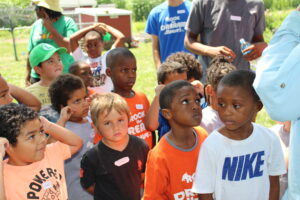
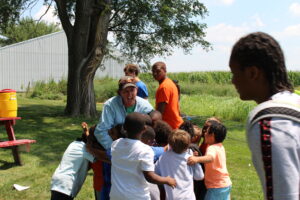
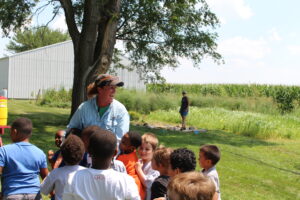
I participated with SYEP and CARE4U youth employment services in 2018. I had two students with me, one from Centennial High School and one from Urbana High School. The two students split their time between the farm and kitchens from June - August. They also participated in assisting with all of our summer youth workshops.
I am currently working with Boy Scouts of America for an Eagle Scout Project, where the student is building us three movable chicken coops to assist in educating on sustainable farming.
There were six press articles that were published in 2017. The first was a local newspaper, News Gazette, article featuring SARE and this grant. It was published 5/2/2017 and went out to 25,000 people.
I submitted three articles that were published in the The Land Connection's Newsletter on 9/29/2017, 11/21/2017 and 7/20/2018.
http://thelandconnection.org/blog/fighting-foes-and-folly-farming
http://thelandconnection.org/blog/SAREFarmer/RancherGrant
http://thelandconnection.org/blog/weedmgmt2018/StudentInterns
There was an article on SARE and New Farmers Listserv on 10/5/2017 and on the New Illinois Farmer Facebook page 2018.
http://illinoissare.org
Each of the above publications, with the exception of The News Gazette, reached over 10,000 people.
Morning AG Clips featured an article 11/6/2017 reaching millions of farmers and educators.
https://morningagclips.com/sare-grant-awardee-shares-her-journey/
Midwest Living published an article regarding my Forest to Mansion Dinner, educating the community on locally foraged cuisine, reaching 962,759 readers. It was published September/ October 2017.
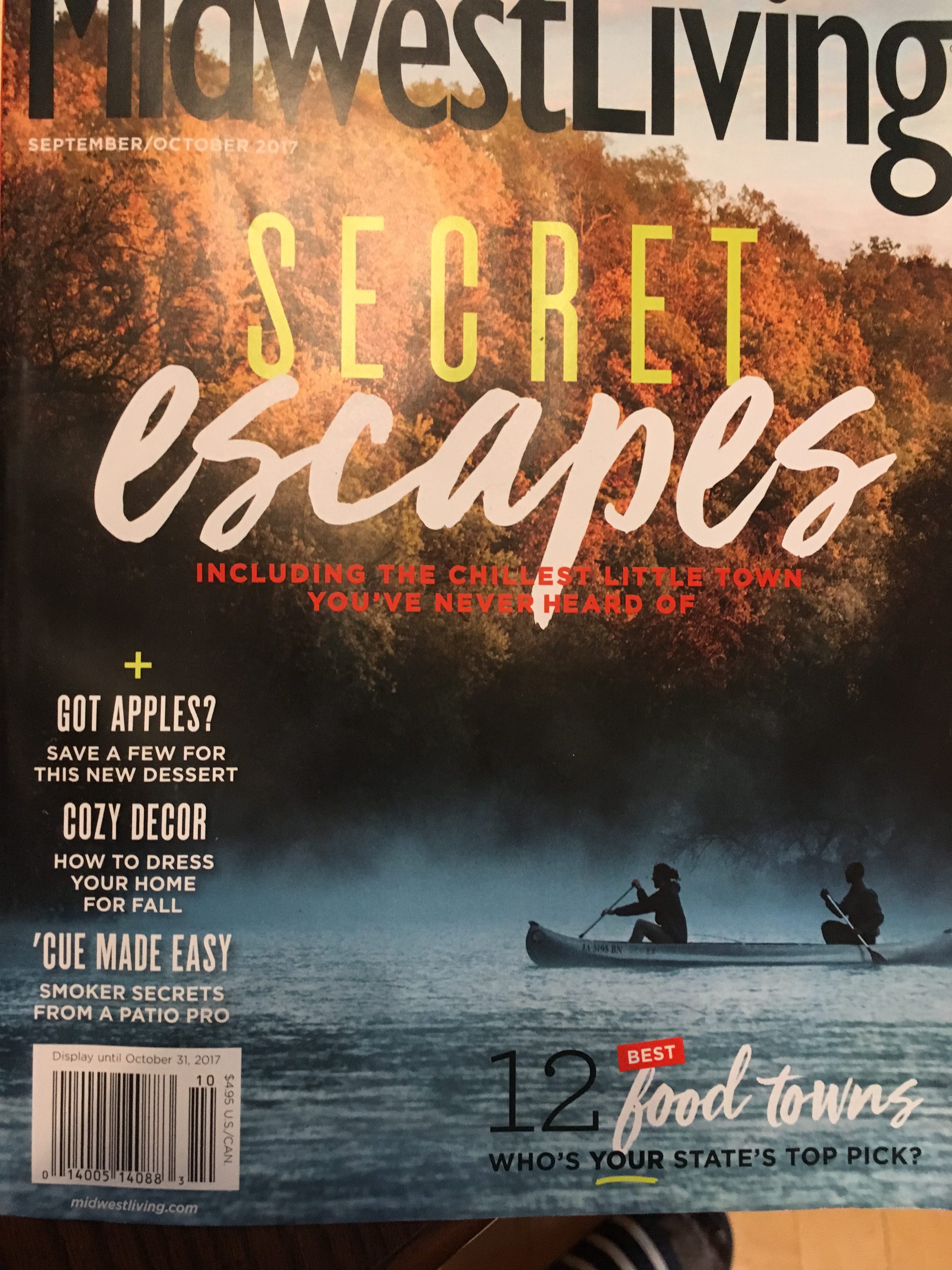
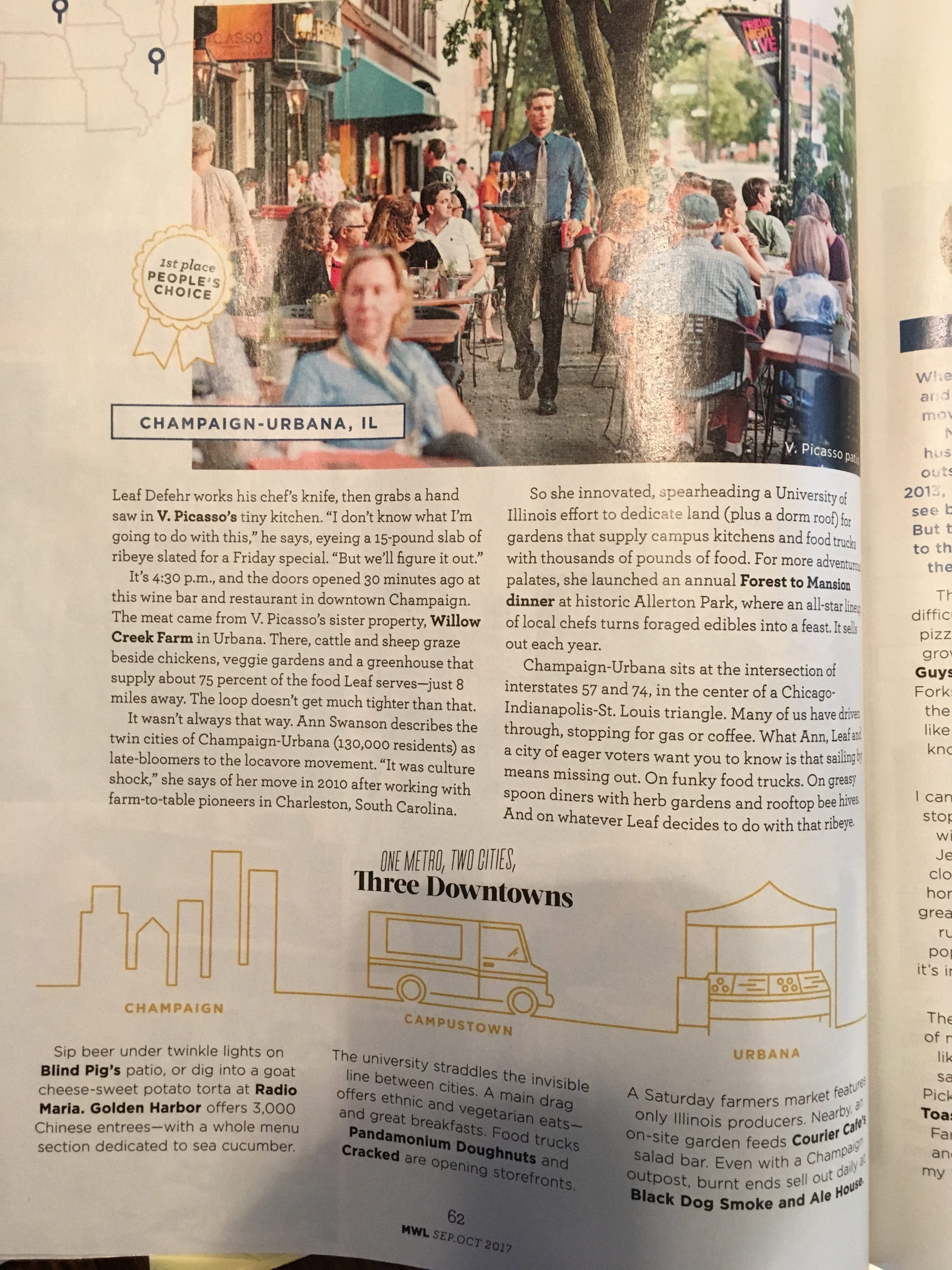
I gave four farm tours, excluding the DREAAM House youth workshop, in 2017. Each group consisted of the foodservice workers that make up the company. There were 25 people in total.
I created a poster and presented my grant at SARE Our Farms Our Future Conference in 2018, reaching 2,000 people.
North_Central_SARE_poster_vertical
In 2018 I gave three farm tours, two on our old land at U of I and one at our new farm in West Champaign. The first farm tour was for the current foodservice workers in the company which totaled 26 people. The second farm tour was for all the Resident Advisors at Hendrick House Dorm, 9 people. The third farm tour at our new farm was to assist Champaign, Urbana School Foundation in acquiring a grant for their 2019 outdoor teaching classroom at our new farm location. We had 50 people in attendance. This grant was awarded by the Farm Credit Union and they will break ground in March of 2019.
I hosted a teacher workshop 9/26/2017. The group consisted of 22 Unit 4 middle school and high school teachers. They listened to a powerpoint (included at the beginning of this section) followed by lunch at Hendrick House made with produce from Hendrick House farm.
I worked with The Land Connection and presented a chef demonstration with seasonal local vegetables at the 11/7/2017 Champaign Farmer's Market.
https://www.facebook.com/events/838605822982384/
The workshop/ field days were part of the youth workshops I held for the DREAAAM House. The information regarding that is at the beginning of this section.
I organized and was a featured chef at Allerton's Forest to Mansion dinner both in 2017 and 2018. This is an annual event open to the public where the menu is based on local food foraged in the area. The dinner was held for 100 people and was featured in Smiley Politely, News Gazette and Midwest Living Magazine.
http://allerton.illinois.edu/event/forest-to-mansion-dinner-3/
I participated as a chef for the Stewardship Alliance annual fundraiser, Harvest Celebration, in 2017, using locally sourced food. There were 100 people from the community attending.
https://www.facebook.com/events/248988612266136/
http://www.ilstewards.org/illinois-stewardship-alliance-harvest-celebration/
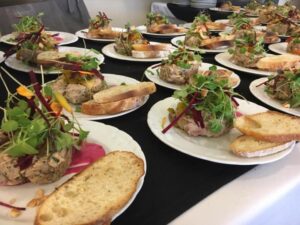
I partnered with University of Illinois Extension in 2019, working to create an expanded edible landscape and possibly a perennial polyculture with native grasses at our one acre educational garden. Working with their Master Gardner program and Master Naturalist program will increase our reach within the community and bring in an adult education sector to the farm.
I partnered with Parkland College at the end of 2018 and will host horticulture and culinary classes on our ten acre farm in 2019 with the potential to reach 9,715 students and faculty.
By the end of 2019 we will have a ten acre teaching farm using sustainable practices, wash/ pack facility, cold storage, greenhouse, outdoor teaching classroom, one acre educational garden and three moveable chicken coops.
Learning Outcomes
By tracking Hendrick House order and purchase numbers of farm produce from 2016-2018 I have set up a system of tracking information that will be valuable to the future of Hendrick House Farms. Our operation was limited in how we were able to control the land we were farming year round and also limited to the equipment available to us. With our expansion to new ground in 2019 with a long-term land lease and our own infrastructure we will be able to expand the product offered to the foodservice workers in the company. We will also be able to provide CSA shares to those chefs interested which will eliminate the extra step in having to place an order with us each week. I have found that anything we can do on the farm side to make the foodservice worker's jobs easier then they will be more receptive to choosing us for their purchasing needs.
The chef workshops have been well received and I expect farm orders and purchases to increase as we set up our new farm with a stable location and environment. Each year I have found new tools to introduce to the chefs to assist them in using local food. The chefs are now excited for these workshops and are much more receptive to the information provided. Every chef in the company is using Hendrick House Farm produce which is up by 70% from when we first started this project in 2016.
Hendrick House has acquired four new accounts in 2018 because of the appeal of local/ high quality food in the company. Those accounts are Parkland College, Carle at the Fields, University of Illinois Varsity Room and Rose Krantz. I expect these numbers to increase in the future as word is spread throughout the community.
The outdoor classroom that is being built on our new farm will allow for expanded educational classes with the community. We have increased our youth workshops from two in 2017 to five in 2018. We are slated to have a youth workshop once a week over a 20 week period in 2019. Partnering with University of Illinois Extension will allow us to expand our educational component to adults. We will also be hosting community college classes on our farm in 2019.
Our partnership with CUSF will continue and will hopefully allow Hendrick House Farm to expand our market into the local school system so we can reach more youths in the community rather than those who are participating in our youth workshops.
My book has been shared and passed through the community. I will continue to make it available through Hendrick House and SARE assisting the community in knowledge regarding local food and how to prepare it.
Hendrick House purchases from local farms continue to increase every year from 2016. As more farmers sell to Hendrick House they will be more comfortable working with chefs who run institution kitchens. The increase in local food purchases has increased the local economy by thousands of dollars each year and continues to rise.
We have gone from being a three acre vegetable farm producing local food for a company that wasn't receptive and being completely dependent on University of Illinois. Currently we have a ten year land lease for ten acres, five of which will be in production in which all chefs and foodservice workers within the company are participating. We have partnered with the community through our efforts to educate on local food. We have created a relationship with the local schools providing field days and the potential of providing local food to schools. This project has changed our company immensely over the last two years.
There were no real disadvantages to this project. We felt only positive outcomes.
I am open to requests for more information and I would advise other farmers and ranchers to make as many connections as possible within the community they are farming. The food community is a small world and most everyone is willing to support each other and expand on each other's operations. Most of my success with this project came from community support.

